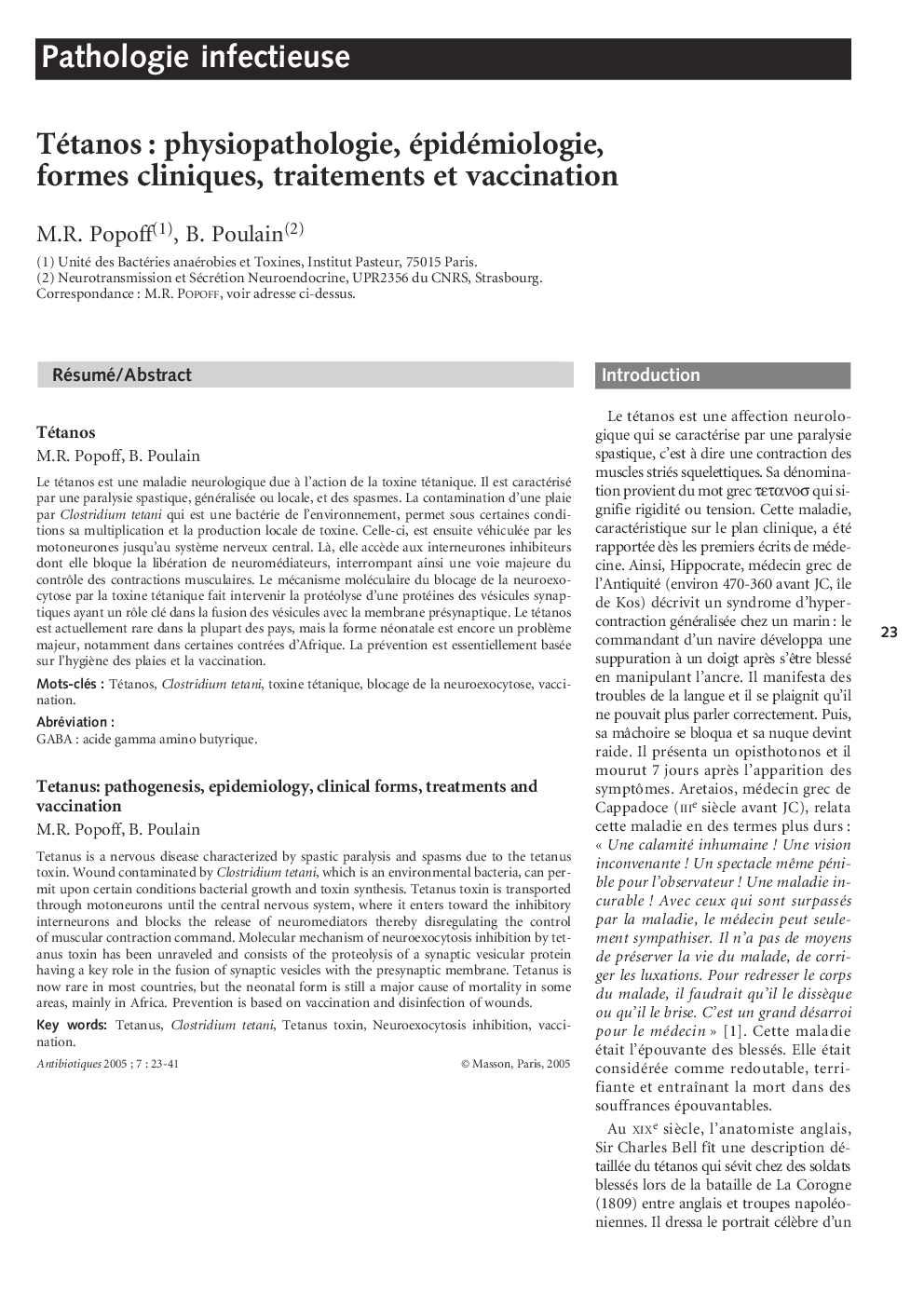| Article ID | Journal | Published Year | Pages | File Type |
|---|---|---|---|---|
| 9275280 | Antibiotiques | 2005 | 19 Pages |
Abstract
Tetanus is a nervous disease characterized by spastic paralysis and spasms due to the tetanus toxin. Wound contaminated by Clostridium tetani, which is an environmental bacteria, can permit upon certain conditions bacterial growth and toxin synthesis. Tetanus toxin is transported through motoneurons until the central nervous system, where it enters toward the inhibitory interneurons and blocks the release of neuromediators thereby disregulating the control of muscular contraction command. Molecular mechanism of neuroexocytosis inhibition by tetanus toxin has been unraveled and consists of the proteolysis of a synaptic vesicular protein having a key role in the fusion of synaptic vesicles with the presynaptic membrane. Tetanus is now rare in most countries, but the neonatal form is still a major cause of mortality in some areas, mainly in Africa. Prevention is based on vaccination and disinfection of wounds.
Related Topics
Health Sciences
Medicine and Dentistry
Infectious Diseases
Authors
M.R. Popoff, B. Poulain,
